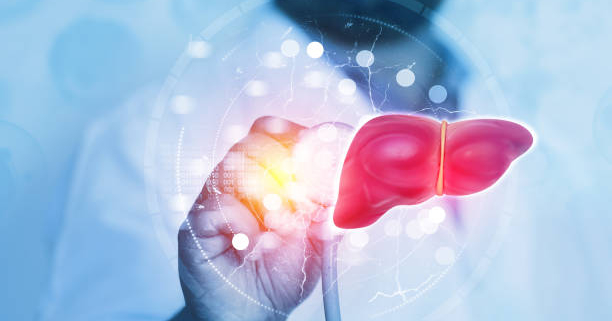What are Glycogen Storage Diseases (GSDs)?
GSDs are a group of rare inherited metabolic disorders that affect the body’s ability to store and use glycogen, a complex sugar that serves as the primary source of energy. These disorders arise due to enzyme deficiencies that hinder the normal breakdown or processing of glycogen. Consequently, individuals with GSDs experience difficulty maintaining normal blood sugar levels, leading to a variety of symptoms.
Types of Glycogen Storage Diseases
There are several types of GSDs, each classified by the specific enzyme deficiency. Some common types include:
- Von Gierke disease (GSD I): This type is caused by a deficiency in the enzyme glucose-6-phosphatase, leading to low blood sugar (hypoglycemia) and an enlarged liver.
- Pompe Disease (GSD II): Caused by a deficiency in acid alpha-glucosidase, resulting in glycogen accumulation primarily in muscles, causing muscle weakness.
- Andersen’s Disease (GSD IV): This type involves a deficiency in the branching enzyme, leading to abnormal glycogen structure and accumulation in the liver and heart, causing liver damage (fibrosis and cirrhosis).
- McArdle Disease (GSD V): Deficiency of the enzyme myophosphorylase, resulting in difficulty breaking down glycogen for energy in muscles, leading to exercise intolerance, muscle pain, and fatigue.
- Hers Disease (GSD VI): Caused by a deficiency in liver phosphorylase, leading to abnormal glycogen breakdown and liver enlargement.
- Tarui Disease (GSD VII): This type is characterized by a deficiency in phosphofructokinase, an enzyme crucial for energy production. It results in exercise intolerance, muscle pain, and abnormal glycogen accumulation in muscles.
- Fanconi-Bickel Syndrome (GSD XI): Mutations in the gene responsible for the glucose transporter protein cause this type. It leads to glycogen and other substance accumulation in various tissues, causing liver and kidney problems, and affecting growth and development.
Symptoms of Glycogen Storage Disease
The signs and symptoms of GSDs vary depending on the specific type and the severity of the enzyme deficiency. However, some common symptoms include:
- Hypoglycemia: Low blood sugar levels due to the inability to release stored glucose, leading to weakness, dizziness, and fatigue.
- Enlarged Liver (Hepatomegaly): Accumulation of glycogen in the liver can cause it to enlarge.
- Muscle Weakness: Difficulty performing physical activities due to impaired energy availability from glycogen stores in muscles.
- Fatigue: Easy exhaustion during physical activity, often accompanied by muscle pain and cramping.
- Enlarged Heart (Cardiomegaly): Some GSD types can affect the heart, leading to an enlarged heart or other heart problems.
- Delayed Growth and Development: Children with GSDs may experience delays in growth, puberty, or overall development.
- Breathing Difficulties: Certain GSD types can cause breathing problems due to muscle weakness affecting the chest muscles or respiratory function.
The severity and presentation of these symptoms can vary significantly based on the specific GSD type. If you experience any of these concerning signs or symptoms, it’s crucial to seek medical evaluation for a proper diagnosis and appropriate management plan.
Diagnosing Glycogen Storage Disease
The diagnostic process for GSDs typically involves a multi-step approach:
- Clinical Evaluation: A doctor will begin by taking a detailed medical history and performing a physical examination to assess symptoms suggestive of GSDs.
- Laboratory Tests: Blood tests are a cornerstone of GSD diagnosis. These may include:
- Blood Sugar Tests: Fasting and post-meal blood sugar levels are measured to identify abnormalities in blood sugar regulation.
- Liver Function Tests (LFTs): These tests evaluate liver health and function, as GSDs often affect the liver.
- Enzyme Assays: Enzyme assays are performed to pinpoint deficiencies in enzymes linked to glycogen metabolism.
- Genetic Testing: This is a critical step for confirming the diagnosis of GSDs. It involves analyzing a DNA sample to identify specific genetic mutations linked to the suspected GSD subtype.
- Imaging Studies:
- Ultrasound: Used to assess the size and condition of the liver.
- MRI & CT Scans: These imaging techniques may be used to evaluate muscle health and detect any tissue abnormalities associated with certain GSDs.
- Biopsy (Continued):
- Assessing Tissue Damage: Tissue samples are analyzed under a microscope to determine the extent of tissue abnormalities caused by GSD.
- Specialized Testing: Depending on the suspected GSD type, additional specialized tests might be conducted to:
- Evaluate enzyme activity related to glycogen metabolism.
- Observe glycogen accumulation in specific tissues.
Treatment of Glycogen Storage Diseases
While there’s no cure for GSDs, various strategies can effectively manage the condition and improve quality of life:
- Dietary Modifications: A carefully planned diet is crucial in managing GSDs. This often involves:
- Balanced Carbohydrate Intake: Patients are recommended to follow a diet with controlled carbohydrate intake to avoid blood sugar fluctuations.
- Frequent Meals: Consuming smaller, frequent meals throughout the day helps maintain stable blood sugar levels.
- Avoiding Fasting: Due to the risk of hypoglycemia, extended fasting periods are discouraged.
- Dietary Supplements: In some cases, specific dietary supplements like cornstarch can provide a slow-release source of glucose and help prevent hypoglycemia.
- Medication: Based on the particular type of GSD and its related symptoms, medications might be recommended to address different facets of the condition.
- For example, some patients with muscle-related GSDs may receive medications to address muscle weakness, while others might require medications to manage cardiac issues.
- Monitoring: Regular monitoring of blood sugar levels, liver function, and overall health is essential for patients with GSDs. Frequent check-ups with healthcare professionals allow for early identification of any emerging complications or issues.
- Regulated Exercise: While exercise can be beneficial for individuals with GSDs, it requires careful management. Working with healthcare professionals, patients can develop an exercise plan that minimizes muscle-related symptoms and prevents exercise-induced complications.
Living with Glycogen Storage Diseases
Effective management of GSD necessitates tailored care, personalized treatment strategies, and continual assistance. If you or a loved one is affected by GSD, seeking expert consultation and care from a team experienced in managing these conditions is paramount. This team might include geneticists, metabolic experts, genetic counselors, and other healthcare professionals. With proper management, individuals with GSDs can lead active and fulfilling lives.






